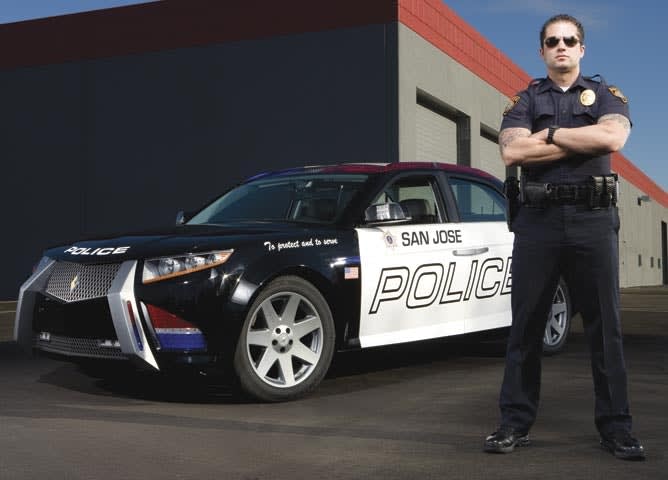The Carbon Motors E7 prototype patrol vehicle looks something like a cross between an exotic sports car and a prop vehicle from a science fiction film. Its body styling is dynamic, muscular, almost startling, and it has the ability to visibly excite police audiences.
But its real beauty is much more than skin deep. It has a scalloped driver's seat that allows a full-size human being loaded down with cop gear to get in and out easily; it has a molded plastic passenger compartment that can be hosed out and even features two drain plugs in the floor board; it has side airbags to prevent the driver from dying in a T-bone accident; and it has a built-in computer and communications system that can be operated by voice command. In other words, the E7 was built to enhance the efficiency, comfort, convenience, and on-the-job safety of police officers.













